March 22, 2017 Adventure to the Red Centre: Part 1 - Ned's Diary
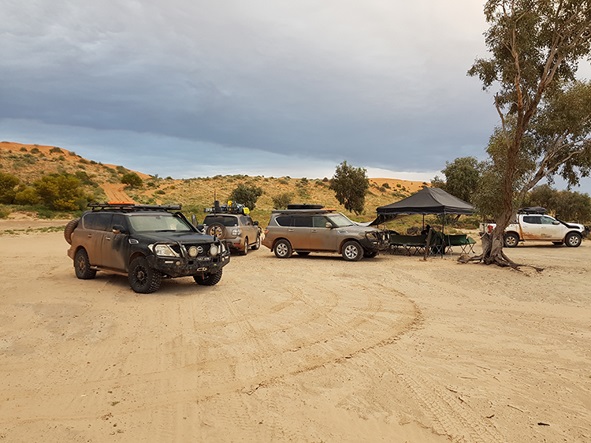
A group of intrepid four wheel drivers recently set out on a mission - to test the new Yokohama GEOLANDAR G015 AT tyres across some of the toughest terrain in Australia.
Four good friends and all members of the Nissan Patrol Y62 Group met in Longreach and crossed the Simpson Desert to Uluru and the heart of this beautiful, sunburned land.
Having never driven on these YOKOHAMA tyres and with wet weather imminent around Birdsville, the question on everyone's lips was - would the YOKOHAMA GEOLANDAR G015 AT tyre be up for the job?
Here is part one of Ned's Diary.
As the saying goes, first in - best dressed, and we were given a great opportunity to test out the new YOKOHAMA GEOLANDAR GO15 AT tyre.
Having good feedback from Jono (currently running the GO12s on his Y62 and also joining this trip) we were really excited to test these out. The aim was to find a good all terrain tyre. In the general 4x4 community, in my opinion, Yokohama probably doesn’t have the reputation of 4x4 tyres like some of the other brands available; however all of the feedback we received from members on the Y62 page was positive.
For a couple of us, these were to be the first Yokohama’s on our 4x4s. Getting closer to departure date, and worried about the widespread wet weather in the Diamantina Shire (around Birdsville), the question was on everyone’s minds. Will the AT treads be sufficient? We were certainly going to find out and put these new tyres to the test.
New Boots
The day had arrived to fit the tyres. Rob, who was getting a set for his Navara, initially expressed his concern about the strength of the sidewall on these new tyres, compared to the GO12’s. Fortunately, the local Bob Jane had a set of the current model GO12’s in stock, so we could see both tyres, side by side. Admittedly, anxiety went up a little when feeling the sidewalls for ourselves. The GO15 is definitely a little firmer in the sidewall (instinctually, this equated to strength as well), and after voicing concerns to the fitter, his reply restored confidence. The fitter assured us that the GO12 were a good, tough tyre, and he felt with the new tread pattern and sidewall firmness in the GO15s, we shouldn’t have many issues.
Hat’s off to the guys at Bob Jane’s in Rockhampton, both professional and friendly. They had all the gear to do a four wheel, wheel alignment and the specifications to do the Y62. It is important to note, not every tyre place has this for vehicles that have all round independent suspension. With the new boots on, it was time to get the last items for the trip and start packing.

Departure Day
Fast forward to departure day, the Y62 is all packed up and ready to roll.
Having not spent much time driving on these tyres unloaded, it was hard to give that feedback just yet. With the car fully loaded, lots of weight and wind resistance, there was some noticeable roll in the car. The first stop was Longreach. Leaving Rockhampton, there was about 700km of highway to test how they handle. These tyres are also slightly wider than the stock tyres, so some additional roll was to be expected. Saying that, the car still felt safe and initially I was impressed with the ride. The road feel was more noticeable, and they were quieter than expected.
Arriving at Longreach without incident, albeit a little fatigued, it was great meeting up with a few of the boys; Jono, Rob and their boys. After a quick sleep we were headed off to Birdsville. Despite weather worries, it turned out to be uneventful travelling, but the contrasting scenery was spectacular in all forms after the recent rain.


We arrived at Birdsville pretty late and after a meal at the pub we drove to the bottom of Big Red to camp – sidenote, there are so many prickles in the campsites around Birdsville - wear decent shoes; you have been warned.
Travelling along, we got to test these new tyres out on some sloppy, wet, dirt roads. For the relatively tame dirt road leading to Birdsville and the sloppy terrain heading to Big Red, the tyres where very stable and gripped well. You would expect this from any AT tyre in all honesty, but the base was nice and firm on the muddy sections and the cars didn’t slide all over the place.
BIG RED
The cars made light work of the big sandy dune. The wet helped make it firmer, although towards the top it was still deep and soft. Again the tyres at 25 PSI performed as expected from an AT, but heading into the desert was where we expected to start testing these tyres, and tested they were.

These are the GO12’s below on Jono’s car. This certainly can happen and does happen to any tyre. The trick is finding the right tyre pressure for your vehicle’s weight, and then driving the correct lines. Jono thought to drive between the ruts on the high ground. But with the slippery conditions and rough surface he found himself slip into a rut resulting in the bead coming off the rim. Not to worry, within 20 minutes we had the same tyre back on the rim, pumped up and increased the tyre pressure all round to help prevent a recurrence.

The next day saw us reach the first of the salt lake crossings, and misfortune for an unlucky traveller we caught up with. This bloke was travelling in a four car convoy, and we met up with the rest of his mates on the edge of the salt lake as they were discussing options on how to get him out, without getting more vehicles stuck. Lucky for them, we had Jono, who recovers trucks and machinery for a living, and has plenty of experience in these conditions doing safe recoveries. The recovery went smoothly and we used James’ big Y62 to pull out the stricken vehicle, as his was the only vehicle fitted with 35” Mud Terrain tyres.

It was hard to believe how good these GO15 tyres were in this mud, as you can see it is deep and soft. The key to driving in these conditions is to ensure correct tyre pressure, to increase their footprint, and keep the wheels turning, so they can clean themselves. As you drive through mud, the tyre treads obviously fill up, however they are designed in such a way that this mud is then flicked out, as much as possible. This allows the treads to keep biting into the terrain and gain valuable traction. Sometimes we could only be travelling 5kms an hour, but keeping the wheels spinning keeps cleaning them and they grab enough surface to keep up momentum. Clearly Mud Terrains are designed for these conditions, but as most people only have to contend with these conditions on occasion and 99% of your touring is on gravel, dirt or bitumen, the AT is the most popular choice. As far as AT tyres go, these Yokohama Geolandar GO15 AT’s gained significant respect within our group after this crossing (and within the group of landcruiser drivers we rescued).
We continued on our journey across the Simpson Desert, and the landscape left us awstruck.


Arriving safely at Mt Dare, some 550kms of driving and our only fuel stop since leaving Birdsville, we got to fill up. We spent the night having a few beers, a good steak and watching the footy finals at the local pub.

Talking to a couple of blokes at the pub, who travelled the same way as we did, it was good to share our stories. We were not supprised to hear about the tyre failures these guys suffered on the trip. The road from Dalhousie Springs to Mt Dare is horrible, and photos just don’t do it justice. I also lost my Sony Action Cam which was attached to the side of the car in an endeavour to capture how brutal these roads are on the tyres. We were told it was only luck that got anybody through this track without a puncture. I would have agreed having driven these roads and seen the rocks and corrugations first hand. So when three vehicles, (I don’t count the 35” muddies as they are not comparable to an AT in construction at all), cross these same roads and have absoulutly no issues driving at more then double the speeds these guys where driving,I put that down to damn good tyres. Our speeds generally sat around the 70km/h, again tyre pressure comes into play here, and driving at the speeds we did made the tyres and suspension work hard, which was a really good test. It also gave us the comfortable ride in the cabs in these conditions.


The last leg to Ayers Rock Resort had us travelling more dirt roads, and compared to what we had just driven on they were a dream. We also made a detour to the geographical centre of Australia.
More articles

How Advan Tyres Won 2019!
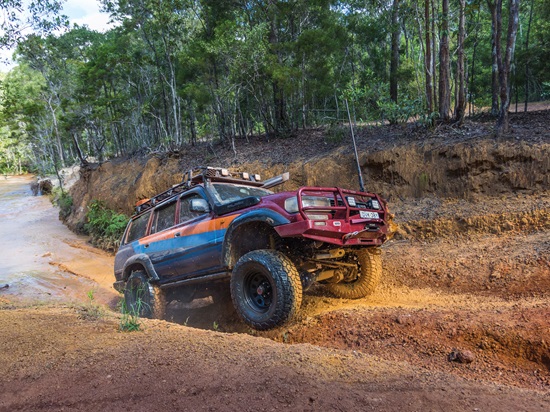
Yokohama Sweep ‘Best New Tyre’ Category at Top Industry Awards!
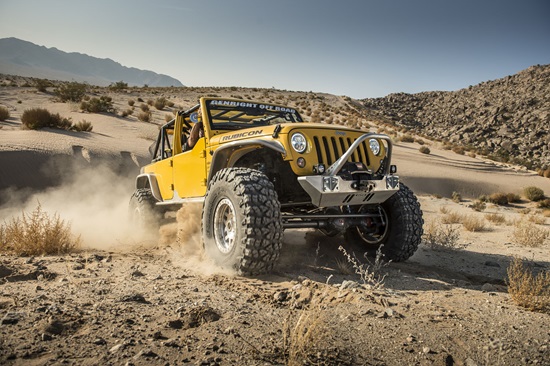
GEOLANDER X-MT G005: RUTHLESS PERFORMANCE, ULTIMATE GRIP
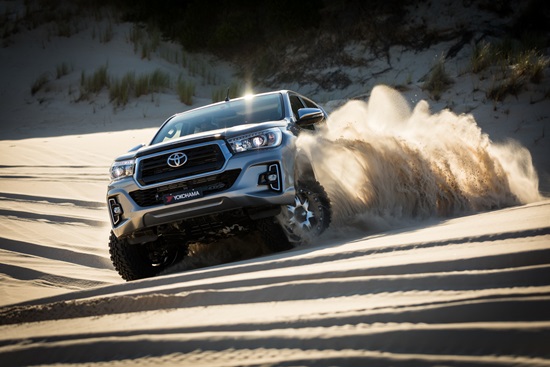
How To Choose Yokohama Geolandar Tyres
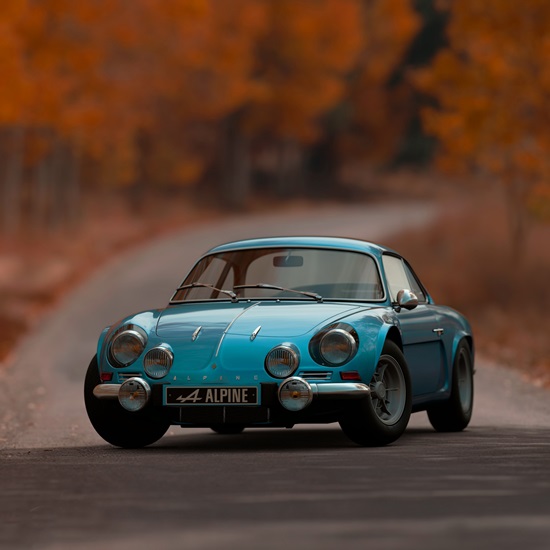
The Ultimate Introduction To Car Photography




